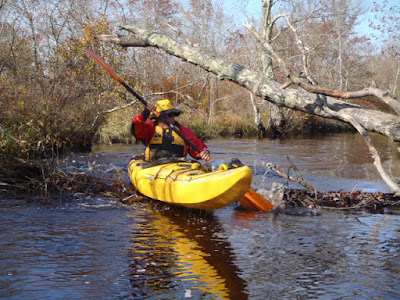Are you PREPARED for fall adventures?
However, October and November hiking and paddling trips within the Adirondack Park and surrounding area still remain in the mix. It is nice to enjoy the wilds without the irritation of mosquitoes, black flies, and other biting insects. Also, popular destinations are minus the crowds of summertime and early fall, so I can enjoy them peacefully. The colors are more subtle – the gold of tamarack trees (a conifer that drops its leaves for winter), the heathery tones of the mountainsides, the greens of spruce and balsam up high, and quite possibly, the whiteness of snow on top.
Fall is a great time to observe migrating birds that are not seen in summer.
With temperatures ranging from 20 to 60 degrees, we must wear or carry warmer clothing (avoiding anything made of cotton) such as gloves, mittens, headwear and a down jacket – enough to at least, be able to spend an uncomfortable, but not deadly, night out in the case of a mishap, whether to oneself or a companion.
Gear to be carried year-round, yet often shunned by the T-shirt and shorts plus bottle of water and cellphone crowd that I sometimes witnessed in summer, should include a whistle, map, compass, water, food/snacks, rain/wind gear, headlamp plus extra batteries (there is much less daylight to accomplish your goals), first aid kit (incl. Vitamin I Ibuprophen, bandaids, etc), knife (utility tool or Swiss Army have extras), toilet paper, a zip bag for trash, space blanket, and some duct tape for repairs in the field. Cellphones can be helpful in an emergency but service is spotty in the Adirondack backcountry and batteries do run down, so a phone should not be depended upon as a substitute for poor planning and preparation.
A vacuum flask of hot chocolate or tea can be just the ticket with lunch in cool weather. When you stop for a break, throw on some warmer clothing before you get cold – don’t wait until you are cold before doing so. Chemical hand and toe warmers are inexpensive and come in handy to warm-up the extremities – most will last for six or more hours – that’s cheap insurance. Bring an insulated pad to sit on.
Newly-fallen leaves can obscure the foot-tread on trails and make the way less obvious – you need to pay more overall attention on the way. The leaves can also be slippery, especially when wet. Hiking poles are recommended for stability, plus they will help save your knees in the long run. If temperatures have recently dropped below freezing, ice could have formed in the trail, so the use of trail crampons such as MICROspikes is highly recommended for those times.
There will be hunters in the woods at this time of year so it is wise to increase your visibility by wearing some bright clothing in blaze orange or, God forbid, pink! If you have long blond hair, I would avoid wearing it in a ponytail. Northern zone, roughly north of Saratoga Springs and NY Route 29, regular deer hunting season this year goes from October 26 to December 8, southern zone goes from November 16 to December 8. Hunters tend to frequent the less steep trails, so you seldom see them on mountain climbs. Hunting is not allowed in many nature preserves so they are good choices when you want to stretch the legs. Areas such as Dyken Pond Environmental Education Center in Rensselaer County and Plotter Kill Preserve in Schenectady County offer many miles of trails. Also, state parks may have areas where hunting is not allowed – visit NYS Parks (parks.ny.gov) for more information.
The better informed you are, the better the experience. Check guidebooks for route descriptions and what to lookout for before you head out. For the price of a restaurant dinner, a guidebook is written by someone who has done more research on the subject than most anyone. It also provides a great long-term investment and still outdoes most everything you can find out online. For the Adirondacks, there are two series of guidebooks and maps: Discover the Adirondacks series by Bill Ingersoll and Adirondack Mountain Club’s Forest Preserve Series. Both are great for hiking information, though the Discover books do add more off-trail and paddling destinations. The NYSDEC website (dec.ny.gov) is the best online resource – backcountry conditions for the Adirondacks and Catskills are updated weekly by Thursday evening.
Finally, it’s important to get a good elevation-based weather forecast before heading out, and pay particular attention to wind direction and intensity. I usually go with the National Weather Service (weather.gov/aly). Note that the forecast can vary greatly by location. For instance, Lake George at 350’ elevation could be warm and breezy, Lake Placid at 1,900’ elevation could be cool and calm, whereas the top of Mount Marcy at 5,300’ could be very cold with winds of over 50mph.
Fall is not the time to hibernate, so get out and have some fun!








Comments
Post a Comment